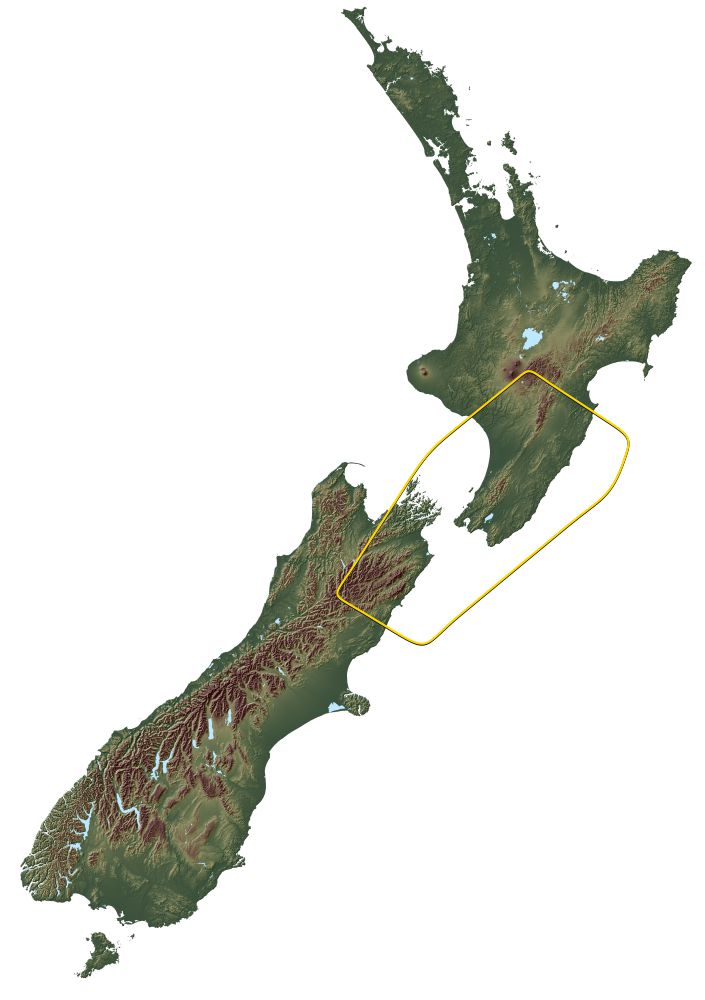Earthquake forecasts
In November 2017, Scientists from Japan, Taiwan, and USA met with our scientists to estimate the chance of a large earthquake occurring in central New Zealand (the area in the yellow box below) following the 2016 Kaikoura earthquake.
The forecasts cover a wider geographic area than the Kaikōura aftershock probability forecast area. This is because a very large earthquake may occur outside the initial aftershock region. The experts assessed all the previous earthquake models, as well as newly developed models of how slow slip events impact the probability of future earthquakes. The results of these models were then combined with other information, including observations of how the numbers of earthquakes change during slow slip events, and evidence of earthquake clustering over the past few thousand years to estimate revised probabilities for large events in central New Zealand.
Forecast Probabilities for Large Events in Central New Zealand (starting 15 November 2017)
| Magnitude Range | Chance of occurence: Range (the figures in the brackets are the best estimate) |
|
| Within the next year | M7.8 or greater | 0.3% to 3% (1%) |
| M7.0 or greater | 2% to 14% (6%) | |
| Within the next decade | M7.8 or greater | 2% to 20% (7%) |
| M7.0 or greater | 10% to 60% (30%) |
Updated probabilities table for central New Zealand starting 15 November 2017. The magnitude ranges are for a magnitude 7.8 or greater and magnitude 7 or greater within the next year and within the next 10 years
The table shows the estimated chance of large earthquakes within the next year, and within the next 10 years. For example, within the next 10 years, there is a 10% to 60% chance (best estimate is 30%, unlikely) of a magnitude 7 or higher earthquake occurring in the area shown on the map.
We estimate that there is a 2% to 14% chance – in verbal likelihood terms this is a very unlikely chance – of a magnitude 7 or above earthquake occurring within the next year in central New Zealand (the map above shows what we mean by central New Zealand).
Our best estimate is a 6% (very unlikely) chance, which is about a 1 in 16 chance. This has decreased over the last year (in December 2016 it was greater than 20% within the next year), but it is still a higher chance than before the 2016 Kaikōura earthquake.
The range of probabilities show the experts’ uncertainty around what we can expect. For example, small ranges mean they are more certain of the probability, large ranges mean they are less certain. The experts also give their ‘best estimate’ of the probability.
Know what to do?
Remember Long or Strong, Get Gone: If you are near the coast and feel a strong earthquake that makes it hard to stand up OR a weak rolling earthquake that lasts a minute or more move immediately to the nearest high ground or as far inland as you can, out of tsunami evacuation zones.
The National Emergency Management Agency (NEMA) has a great website with information on what to do before, during and after an earthquake.
Prepare your home. Protect your whānau
There’s a lot we can do to make our homes safer and stronger for earthquakes. Natural Hazards Commission Toka Tū Ake’s website has key steps to get you started.

